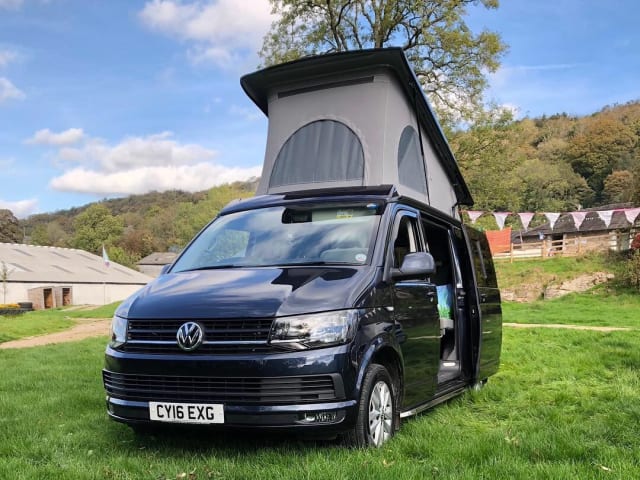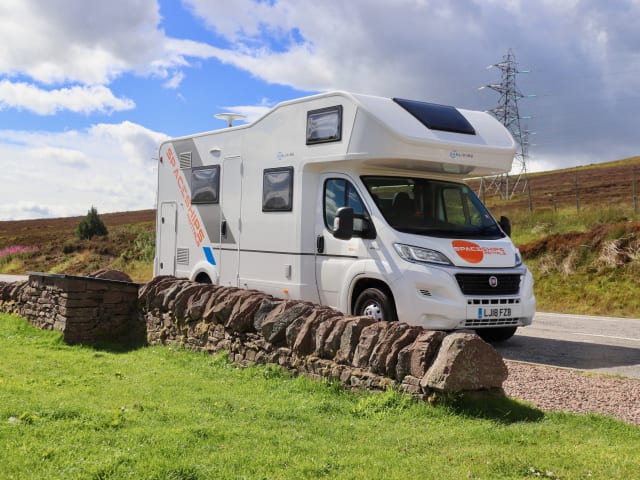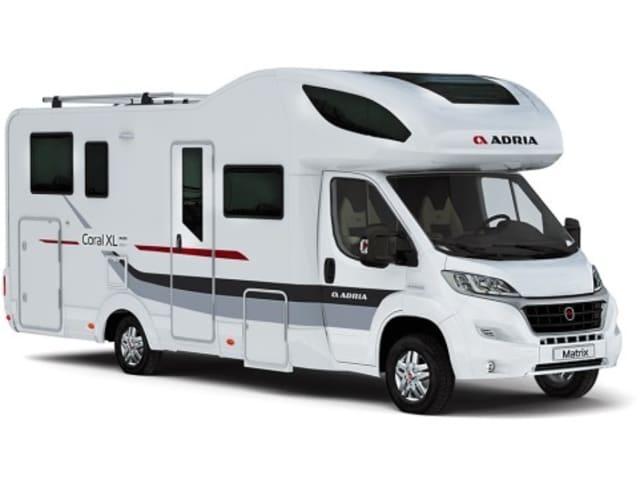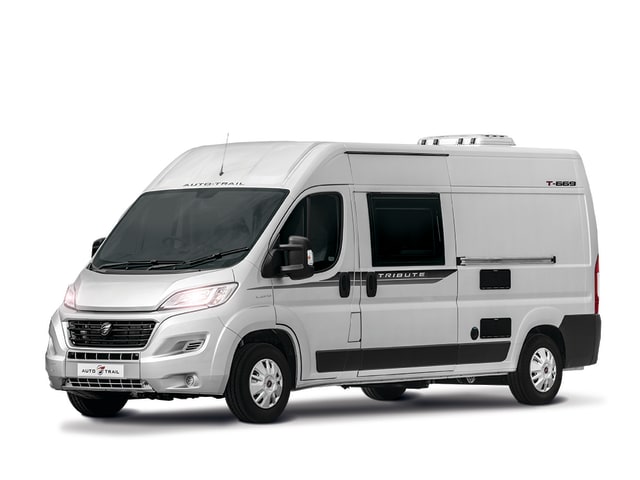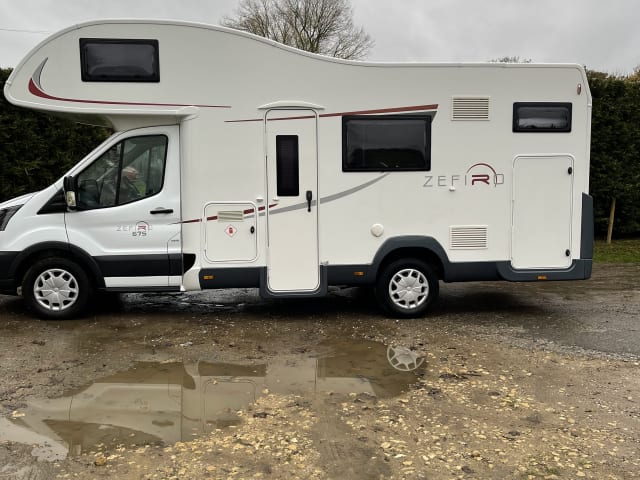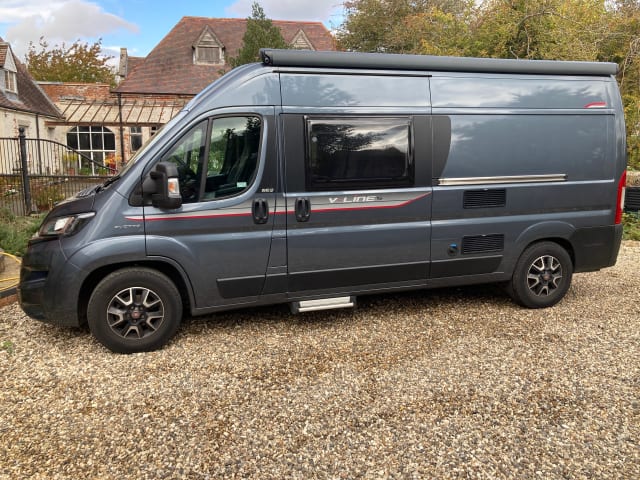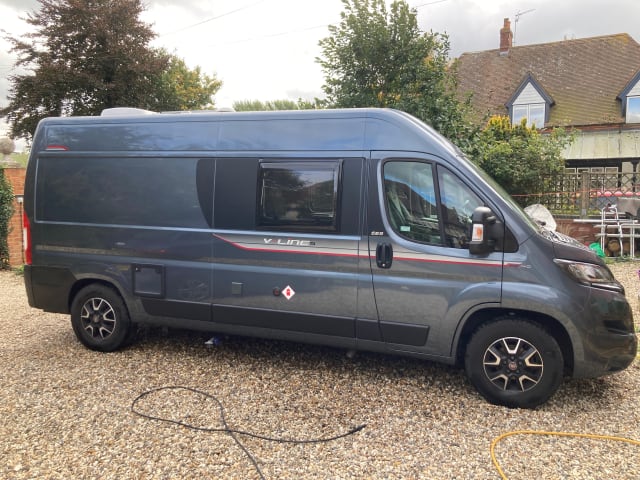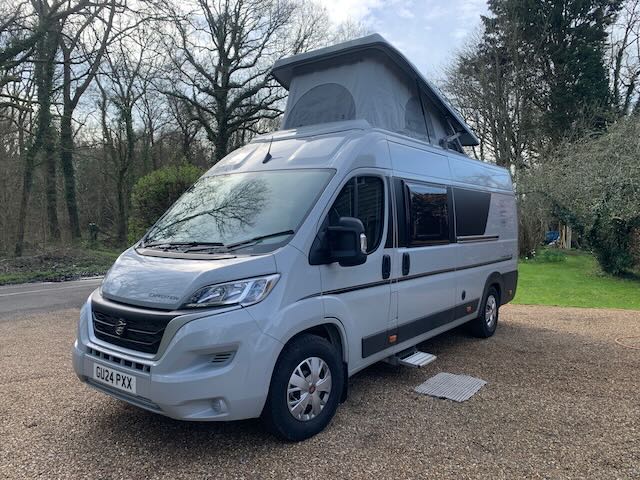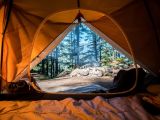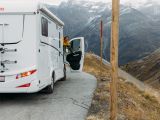Scotland is one of our top UK destinations for campervan getaways, and it’s easy to see why. With quiet roads winding through some of the UK's most remote locations and spectacular scenery, and plenty of campsites along the way, it has loads to offer those who love to get back to nature. What's more, with skiing, mountaineering and climbing on offer in the winter months, there isn’t a better place to head in the UK if you're looking for adventure.
So, to help inspire your next road trip, we’ve caught up with the experts from Snow+Rock to get their top tips on one of their must-try activities, winter climbing.

Why Winter Climbing
If you’re passionate about climbing, then winter climbing is definitely one for your bucket list. And, as Scotland is the home of winter climbing in the UK, it makes perfect sense to give it a go if you’re planning to road trip in the winter months.
With all the thrill and physicality of summer climbs with the added challenge of navigating unpredictable conditions, it’s a must for anyone serious about climbing.
Think About Your Fitness
Before heading straight for the Munros, you need to work on your fitness. Climbing is a physically demanding sport and even more so in the winter months. Simple climbs are made more challenging by poor weather conditions and extra layers, and you also need to factor in the walk to and from your climb in poor conditions, which can add to the physicality of the task.
Cardiovascular fitness is key, so aerobic exercises like running, cycling and swimming can all be beneficial. But strength training is also important for climbers. As well as strengthening your arms and legs, remember to work on your grip.
Practice Makes Perfect
Previous summer hillwalking experience is essential, and familiarity with rope work is a must too. Head to your local rock climbing centre to make sure you have the necessary skills, and speak to other climbers with more experience, as they may have some top tips.
Another thing to bear in mind is that winter climbing requires the use of additional gear like ice axes and crampons, and it’s best to get to grips with these pieces of equipment before heading out. The rock climbing community love to share their experiences and knowledge, so take advantage of this by talking to others who’ve been there and done it.

Brush Up On Your Navigation Skills
Most climbs will require at least a short walk to get to them, so you must have the necessary navigation skills to get you there. Although many of us rely on GPS systems for navigation, it’s important you know how to use a map and compass just in case.
Plan Carefully
With shorter days in winter, planning is essential to help you make the most of the time you have. It’s best to head out early as soon as the sun rises and allow more time than you think necessary to complete the climb. That way, if you run into difficulties, you should still have light on your side.
It’s always a good idea to plan a backup route climb just in case your planned route is unachievable due to conditions.
Finally, don’t forget to let someone know you’re heading out and roughly when you’ll be back so they can raise the alarm if you don't arrive when expected.
Get The Right Gear
You can use the same harness for winter climbing as you do summer, but remember it will need to fit over all the additional layers you’ll be wearing in the colder months. So make sure you try it out at home before heading into the hills.
For winter climbing, you also need to invest in stiff mountaineering boots and crampons. Crampons are toothed metal devices that attach to the soles of your walking boots to give you more traction on ice and hard-packed snow. They’re a crucial piece of gear, but the type of crampons you require depends on the complexity of your climb and the conditions. The crampons you chose must be compatible with your boots, which is where our experts come in. They’ll be able to offer advice and find you the best fit for the climbs you’ve planned.
In addition, you’ll need at least one technical ice axe for your climb. Ice axes come in various shapes and sizes to offer different levels of support depending on the types of mountaineering or climbing you’ll be doing. Our experts can talk you through all the options to help you make the right choice.

Always Check The Weather
Before you head out on any winter climb, you must check the weather reports in the morning. In winter, you also need to check avalanche reports which is why we recommend completing a winter skills course to equip yourself with the necessary skills or heading out with someone familiar with the conditions.
Finally, remember that weather and avalanche reports are predictions, and conditions can change at a moment's notice. So, always be prepared, pack adequate clothing to provide the protection you need and be ready to change your plans to stay safe.
Layer Up Appropriately
When climbing in winter, you need to pack an insulated jacket and waterproof layer to protect you in case the weather conditions worsen. It’s best to wear these when walking to and from the climbing site and keep your belaying jacket for belaying. That way, it won’t end up damp from sweat or the spray from oncoming gales.
Don’t forget to pack multiple pairs of gloves or glove liners too so you can quickly swap them if they get damp. A spare pair of warm mittens or gloves for walking back home is also a good idea – trust us!
Out Climbing
Winter climbing calls for more caution. The conditions mean the chances of ice and hard-packed snow falling on you are greater, so you must choose your belaying spot wisely and never forget to wear your climbing helmet.
You also need to watch out for cornices, overhanging edges of snow on ridges, the crest of mountains and along the sides of gullies, which can collapse without warning. If you can’t see another exit to your climb than burrowing through or climbing the cornice, switch routes or head to your back-up climb. It’s not worth risking the cornice collapsing and being underneath it!
When it comes to racking up, you may be used to doing this on a slope in summer, but come winter, it’s advisable to do it somewhere flat. Not only is it safer, but it’s far less awkward too.

Pack Snacks
Our final piece of advice, pack plenty of snacks and water. When you’re out in the cold, you use more energy to keep your warm, so having lots of nutritious slow-release energy bars, gels or snacks will ensure your energy levels stay topped up for the climb. Don’t forget hydration either - even in cold conditions you need to sip water regularly.
Gear Up At Snow+Rock
Hopefully, you’re now raring to give winter climbing a go and gear up for the challenge. Don’t forget if you need any advice, our in-store experts are on hand to help you make the right choice and find the best gear. Plus, as a valued Goboony member, you can bag 15% off in-store and online.
Need help with your winter walking trip? Or want to check you have the right gear for your trip? You'll find it all on our blog.


